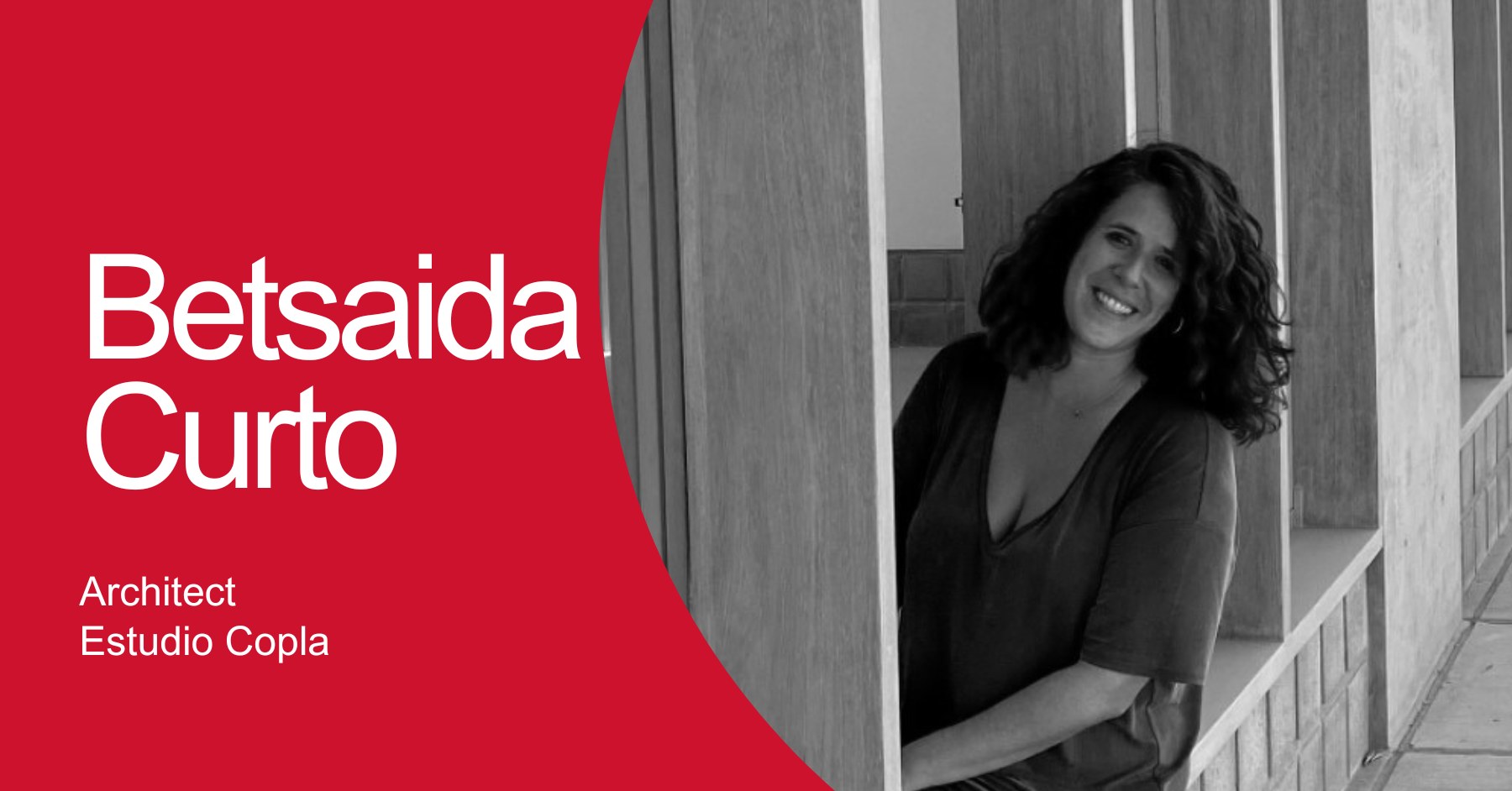Estudio Copla deserves to be known for much more than the award it received in 2023 from the Spanish Superior Council of Architects. Its social commitment is built from the very conceptualization of its way of working. As explained by Betsaida Curto Reyes, its founder: “I believe we are studios of a new era: with a minimal structure, collaborative and networked, adding the necessary team at each moment, which allows us independence and to adapt to each client’s budget”. We spoke with Curto to discover this firm based in Galicia, although its collaborators, like Ander Bados, are located between the Basque Country and Peru.

Where did the need to found Estudio Copla come from?
It arose from the experience of working in Peru with an NGO, hand in hand with my partner Ander Bados. We went very young to study the casuistry and needs to create a school (for which we were awarded). At that moment, we were still discovering the type of architecture we wanted to develop, although we were clear that it would start from commitment: more conscious, with local materials…
Latin America opened my eyes to a very vibrant architecture, in favor of its community, with spaces designed for its population. It is something that is very latent in all the studios we met there. In Europe, however, we think we are ahead, but I believe we do not respect the environment as much; sometimes we prioritize modernity when, often, we are not dealing with the materials that best speak with the environment. It is more modern to rethink tradition, as they do in Latin America.
Is there a before and after since receiving an award like the one from the Spanish Superior Council of Architects?
Yes. Besides the exposure and making ourselves known to professionals who had not discovered us, it reaffirmed that we are going in the right direction: focusing on social aspects, the community, working by talking to all stakeholders and connecting everyone. That they valued this factor, in addition to sustainability, is unprecedented in that distinction.

This award especially valued your environmental and social commitment. Do you think these commitments are present in current architecture?
They are, but there is still a long way to go in Spain and Europe. They are much more appreciated in Latin America. We see it in the use of zero-mile materials, something that here seems to be valued in cuisine but is still entering architecture.
Environmental responsibility is indisputable today. However, the prejudice persists that architecture does not think about the users. How are you breaking with this preconceived idea?
We have to talk a lot with each client. In the case of the school in Peru, the people who were going to use it were children, so we talked to their parents and parent associations to understand the idiosyncrasies of the place. I also think it is vital not to make a distinction between clients because social architecture has always been seen as second-class, where there is no room for creativity or innovation. In my experience, there are always ways to approach a project from there.

Your award-winning project is located in Peru. How can architecture be conceptualized for sociocultural contexts different from where it is conceived?
Again, in Peru, communication and listening critically were important. It was about suburbs that did not have a visible identity like, for example, the rural world of Galicia or Asturias, where I come from. So, we had to investigate to reveal the essence and culture, the traditional construction techniques… And how to transfer it to the most economical proposal possible. Sometimes, when you extrapolate the view, or directly come from a different location, you see where to improve.

What are your favorite materials in the studio?
I am a big fan of wood and zero-mile products, which logically vary depending on where you are. I am also fascinated by reformulated traditional materials. This last point was something I researched during 2023 with the University of Coruña and the NGO Habitamos in Mozambique. There we sought to reformulate houses for refugees by recovering local construction techniques, thus replacing the tents we send from Europe that usually have little durability. We also worked to ensure that these structures were easily dismountable, to allow for reuse.
Do you do more newly-built or rehabilitation?
Mainly newly, but I would prefer more rehabilitation because I believe we should go in that direction: taking advantage of the existing instead of creating new spaces.

How do you seek inspiration?
Since I studied my degree, my world changed, and instead of looking ahead, I look up and keep details: an old house, something new I see in the landscape…
The tradition and culture of each place also inspire me, and, of course, I look at professionals who do it very well, even in project types that are not my specialty, such as airports. From my time in Latin America, I highlight female architects who are increasingly having a voice in such a male-dominated field: voices like Gabriela Carrillo, Frida Escobedo, Marta Maccaglia… … Additionally, I believe that being a woman in this profession requires twice the energy to be heard.
What would be your dream project?
I really believe there is no bad project; I am fascinated by those where I can design everything because architecture is not just a shell, it is looking for detail in a floor, a type of furniture… The ideal working conditions would be to find more female surveyors and that what was done in Peru, with those social values, could be transferred to Spain.




